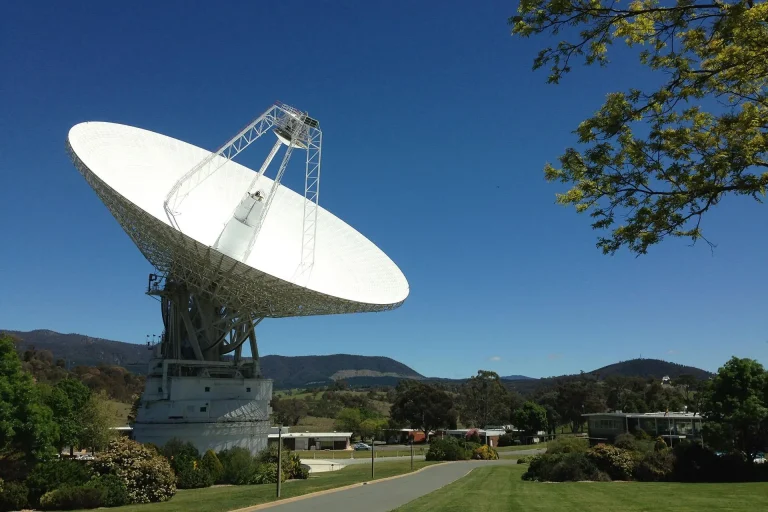NASA’s Hubble Space Telescope reveals an ultraviolet view of Jupiter.
NASA, ESA, and M. Wong (University of California – Berkeley); Processing: Gladys Kober (NASA/Catholic University of America)
This newly released image from the NASA Hubble Space Telescope shows the planet Jupiter in a color composite of ultraviolet wavelengths. Released in honor of Jupiter reaching opposition, which occurs when the planet and the Sun are in opposite sides of the sky, this view of the gas giant planet includes the iconic, massive storm called the “Great Red Spot.” Though the storm appears red to the human eye, in this ultraviolet image it appears darker because high altitude haze particles absorb light at these wavelengths. The reddish, wavy polar hazes are absorbing slightly less of this light due to differences in either particle size, composition, or altitude.
The data used to create this ultraviolet image is part of a Hubble proposal that looked at Jupiter’s stealthy superstorm system. The researchers plan to map deep water clouds using the Hubble data to define 3D cloud structures in Jupiter’s atmosphere.
Hubble has a long history of observing the outer planets. From the Comet Shoemaker-Levy 9 impacts to studying Jupiter’s storms, Hubble’s decades-long career and unique vantage point provide astronomers with valuable data to chart the evolution of this dynamic planet.
Hubble’s ultraviolet-observing capabilities allow astronomers to study the short, high-energy wavelengths of light beyond what the human eye can see. Ultraviolet light reveals fascinating cosmic phenomena, including light from the hottest and youngest stars embedded in local galaxies; the composition, densities, and temperatures of the material between stars; and the evolution of galaxies.
This is a false-color image because the human eye cannot detect ultraviolet light. Therefore, colors in the visible light spectrum were assigned to the images, each taken with a different ultraviolet filter. In this case, the assigned colors for each filter are: Blue: F225W, Green: F275W, and Red: F343N.
NASA的哈勃太空望远镜展示了木星的紫外线视图。
影像来源: NASA, ESA, and M. Wong (University of California – Berkeley); 影像处理: Gladys Kober (NASA/Catholic University of America)
这张由NASA哈勃太空望远镜最新发布的图像显示了木星由紫外线波长合成的颜色。这张照片是为了纪念木星冲日而拍摄,当行星和太阳在天空的对侧时,这张气态巨行星的照片就会出现被称为“大红斑”的标志性大规模风暴。虽然风暴在人眼看来是红色的,但在这张紫外线图像中,它看起来更暗,因为高海拔的雾霾颗粒吸收了这些波长的光。由于颗粒大小、成分或海拔高度的不同,红色的波浪状极雾吸收的光略少。
用于制作这张紫外线图像的数据是哈勃望远镜研究木星隐形超级风暴系统的一部分。研究人员计划利用哈勃望远镜的数据来绘制木星大气中的深水云,以确定木星大气中的三维云结构。
哈勃望远镜在观测外行星方面有着悠久的历史。从苏梅克-列维九号彗星的撞击到研究木星的风暴,哈勃长达数十年的职业生涯和独特的有利位置为天文学家提供了宝贵的数据,以描绘这颗动态行星的演变图。
哈勃的紫外线观测能力使天文学家能够研究超出人眼所能看到的短波高能量光。紫外线揭示了迷人的宇宙现象,包括来自本地星系中最热和最年轻的恒星的光;恒星间物质的组成、密度和温度;以及星系的演化。
这是一幅假彩色图像,因为人眼无法看到紫外线。因此,可见光光谱中的颜色被分配到图像中,每张图像都是用不同的紫外线滤镜拍摄。在本例中,每个滤镜的指定颜色为:蓝色:F225W,绿色:F275W,红色:F343N。







